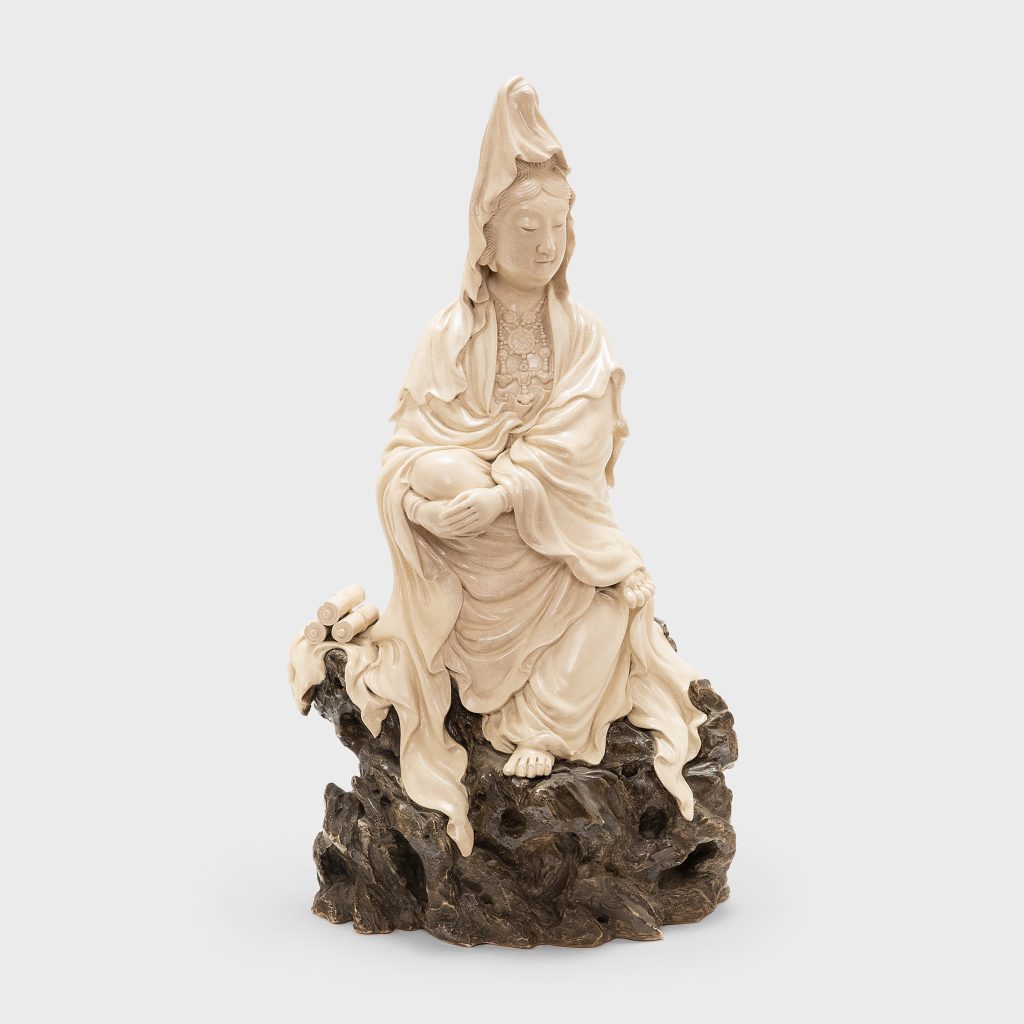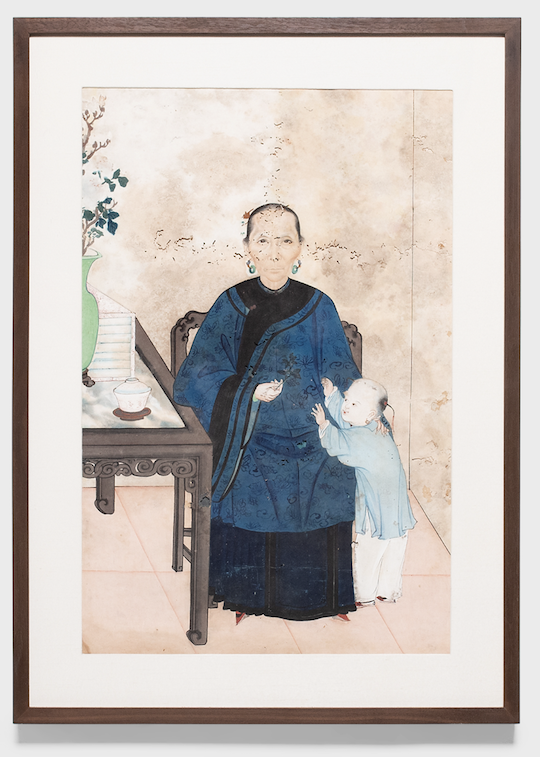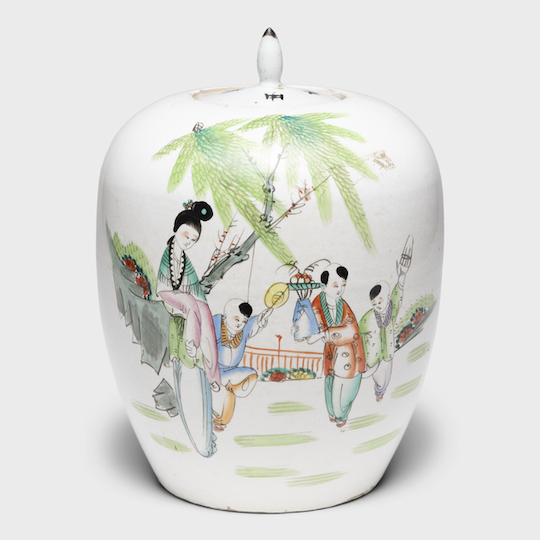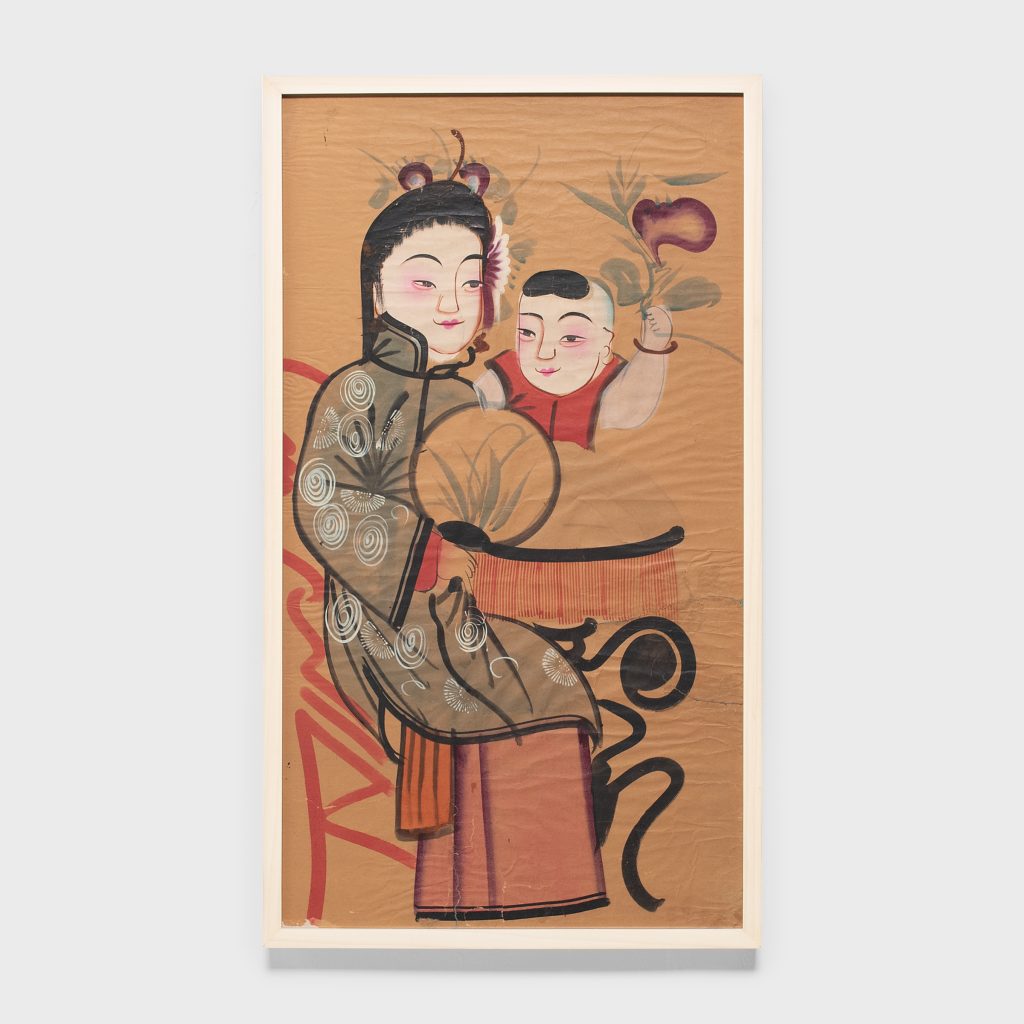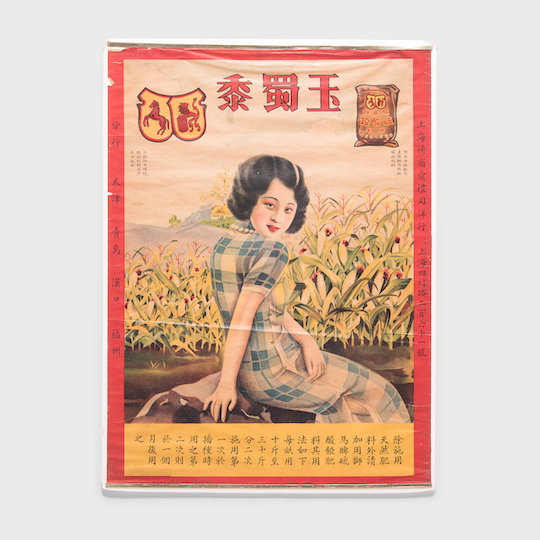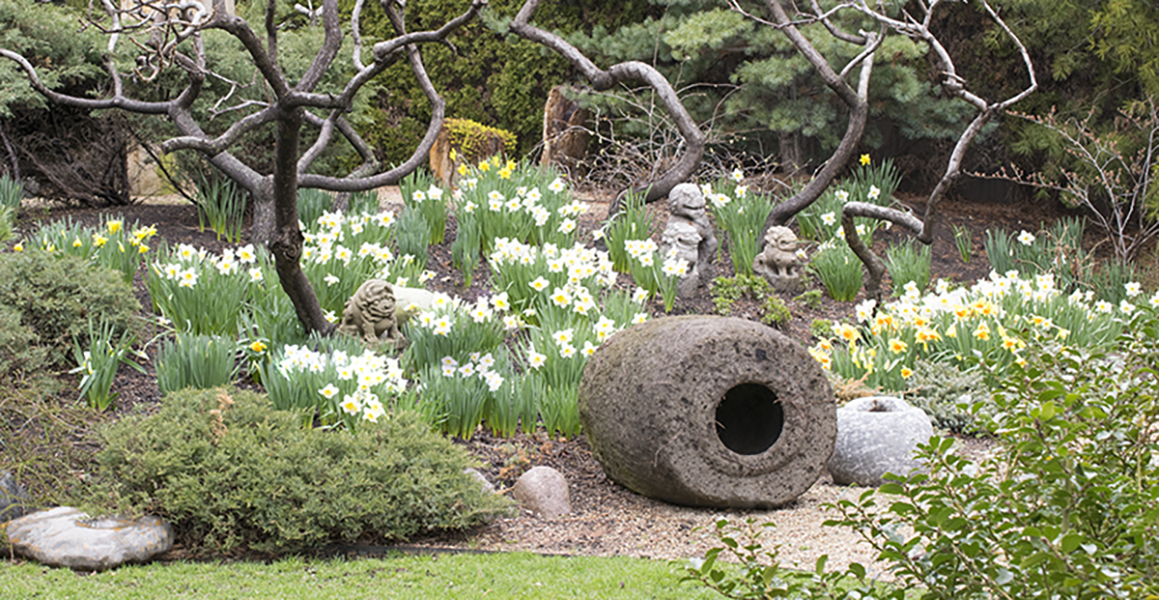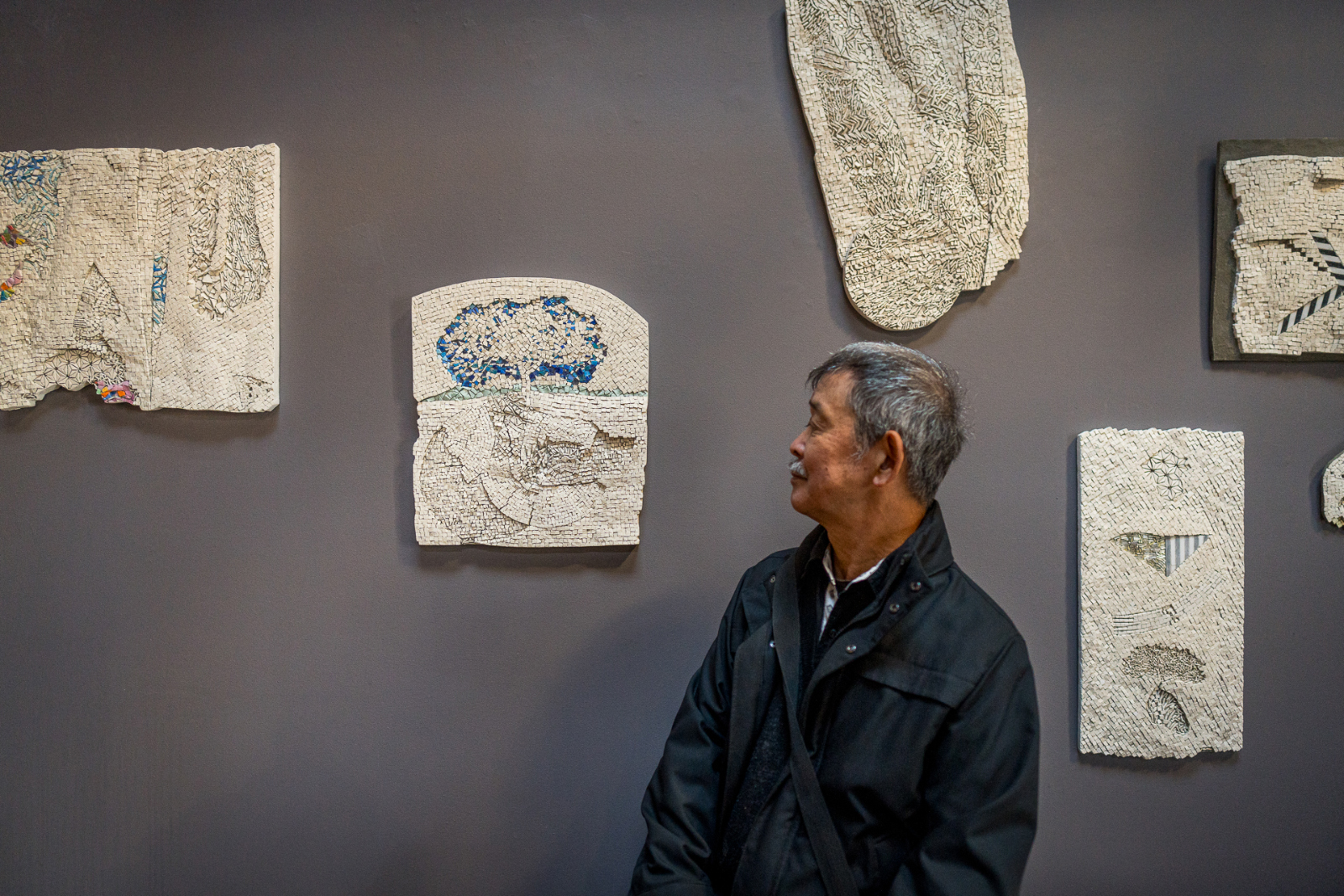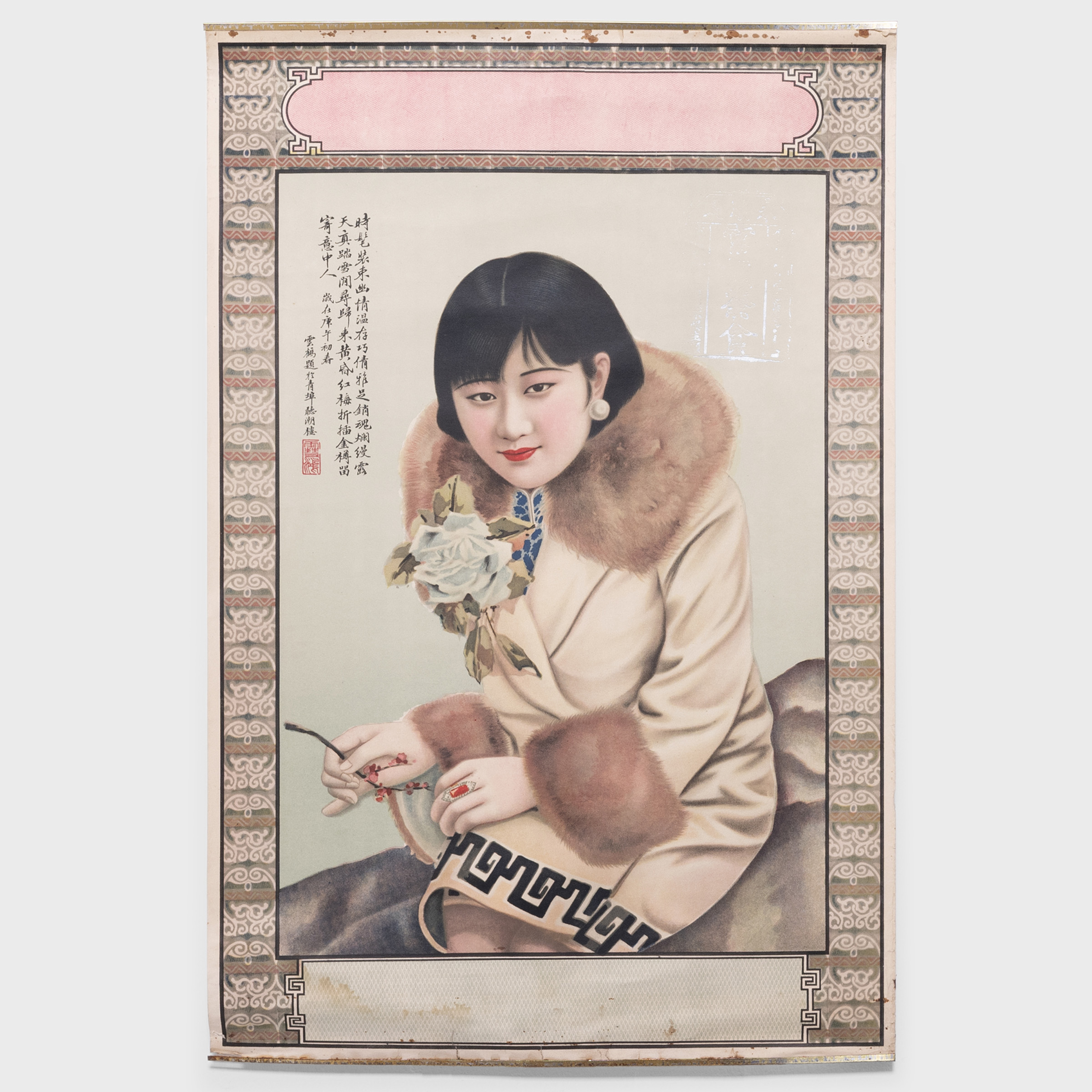
PAGODA RED is full of evocative hints of past lives — a delicate silk shoe, a bespoke home for a much-loved songbird, an elaborate jewelry box from a bygone era. Beyond the evocative, we’re also a showcase of evolving craftsmanship and tastes over time. Our expansive collection lets design history unfold, over centuries of fine art and everyday objects. This is evident throughout the gallery, but particularly in the shifting portrayal of women in Chinese art. Browse PAGODA RED and you’ll encounter goddesses and wives, saints of compassion and cigarette models. Each is a dynamic representation of women, their changing societal roles, and the ways they were depicted in their own eras, from religious sculptures to provincial folk art, famille rose porcelain to 1930s Art Deco lithographs.
Goddesses & Saints
As in other cultures, an important and enduring representation of women is as a goddess or saint. Guanyin is the most beloved enlightened being in China, known as the Goddess of Mercy. In the Blanc de Chine sculpture featured above, she commands her surroundings with serenity and elegance, wearing a Dharma wheel necklace and flowing robes that ooze into her sculptural root mount. In an earlier depiction from 1800 — a monumental limestone bust featured below — she wears an elaborate headdress, dotted with scrolled heavenly clouds and seated bodhisattvas.
Serenity is also depicted in the Taoist immortal He Xiangu, the patron saint of housewives. In the reverse glass painting below, she sits in silk robes alongside Cao Guojiu, the patron saint of actors. Guanyin and He Xiangu serve different feminine roles but each is a representation of the the divine, to be called on in daily life.
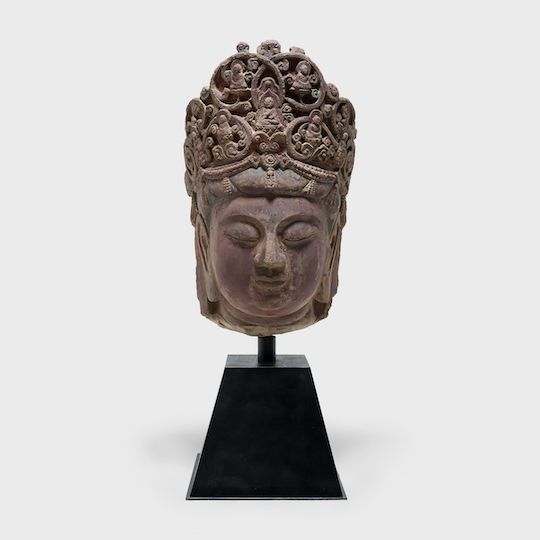
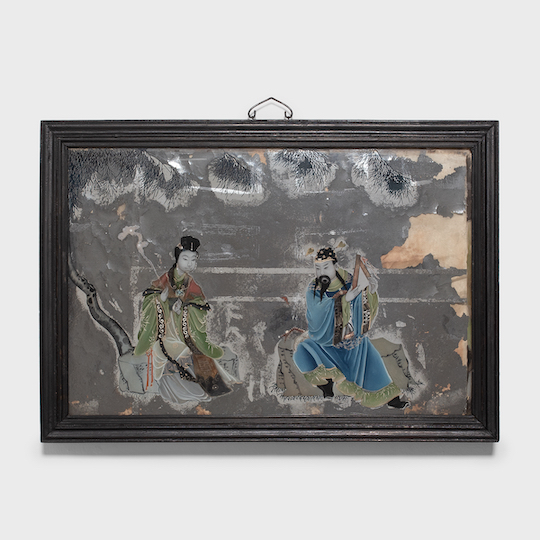
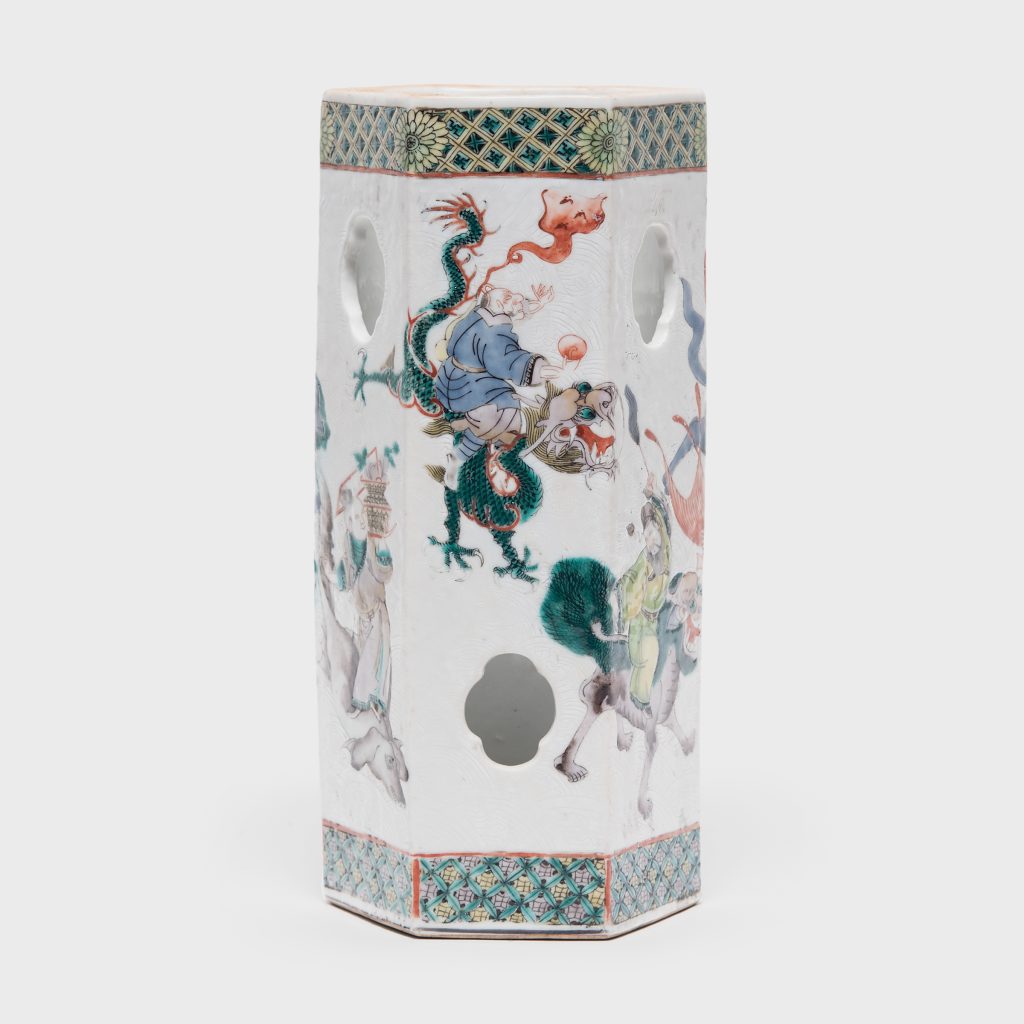
Ancestor Paintings & Altar Figures
Ancestor paintings also draw from a connection between daily life and the ephemeral. In most Chinese households, ancestors are thought to be sources of honor, protection and luck. During the late Ming and Qing dynasties, paintings like the one above were commissioned specifically for ancestor worship and were believed to house the spirits of the deceased. This framed painting, one of a pair, shows a grandmother, dressed elegantly and with jade earrings, seated near tea and books atop a marble table of the literati. Her face is serious, while the presence of her finely painted, beautifully appointed grandson alludes to her role as matriarch for future generations.
Many ancestor paintings depict several generations of family. Usually, the oldest ancestors are largest in scale at the rear, while the youngest relatives are depicted smaller in scale in front. Suggesting the continuum of life and the common practice of ancestral rituals practiced in the home, the groups are often portrayed in interior rooms before altar tables, set with ceremonial offerings.
In addition to ancestor paintings, a domestic altar might also feature tabletop ancestor figures. We recently acquired a female ancestor figure dressed in a long Manchu-style robe, painted to resemble red and gold silks. Many of us at PAGODA RED have our own personal altars set with altar figures and other offerings to respect and honor women and other important members of our families from generations past.
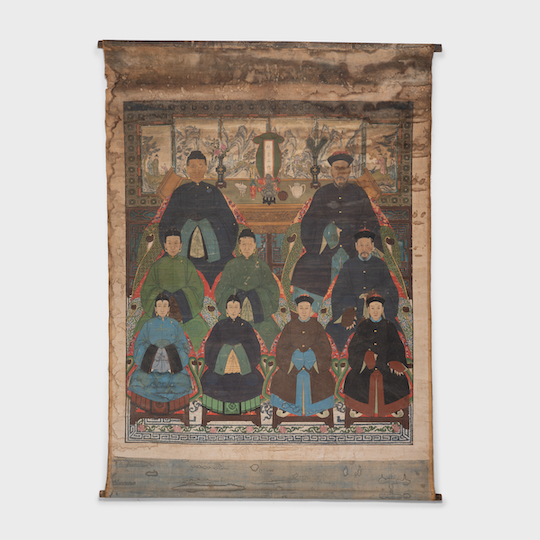
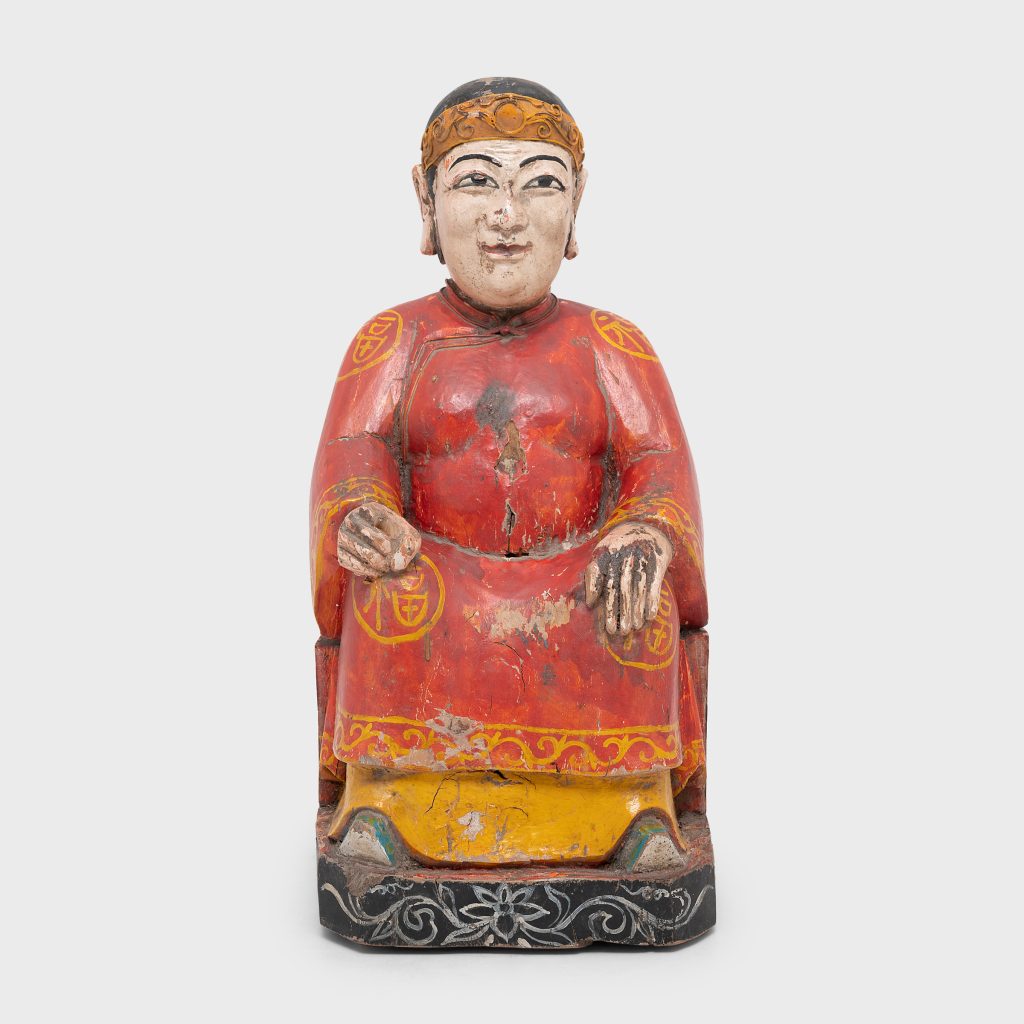

Famille Rose & Enameled Porcelain
The famille rose and enameled porcelain popularized in the early 20th century often depicted women in an ideal domestic sphere. On these decorative vases and jars, beautifully-dressed women sit serenely near frolicking children, lounge under plum trees, and recite poetry with friends. On the ginger jar above, a fashionable young girl watches three boys at play in a courtyard garden, an allusion to a wish for successful sons. Much like magazine photo shoots today, these scenes were created to be aspirational as well as artistic. Each one is unique, and a memorable departure from tableware with more standard geometric and floral patterns.
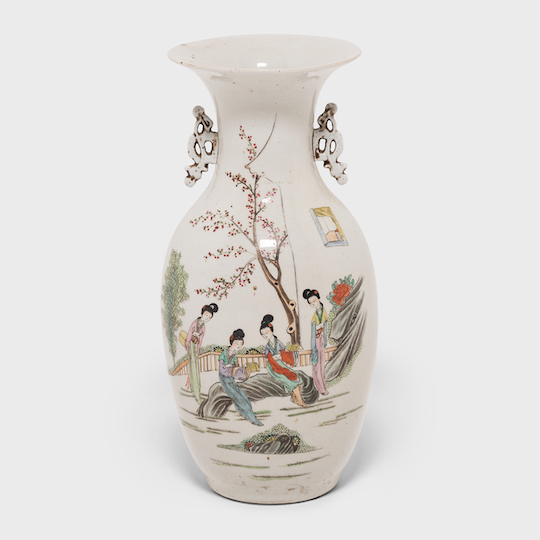

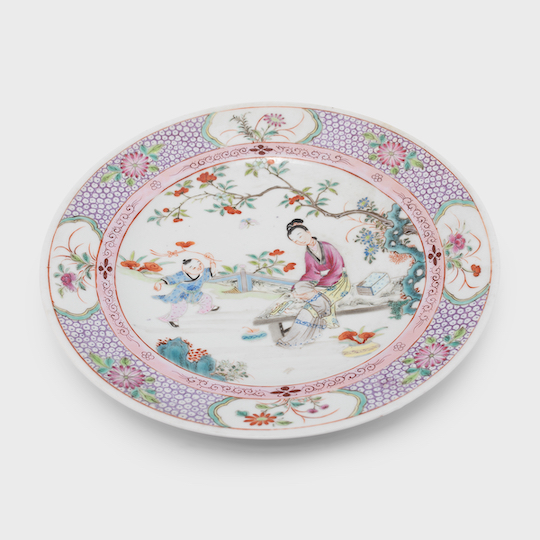
New Year’s Paintings (Nian Hua)
Chinese New Year paintings (nian hua) are also stylized, but rather than the muted colors and delicate lines of the famille rose porcelain, these paintings are typified by strong lines and rich colors. Nian hua were created by regional folk artists to celebrate each New Year Spring Festival, and most depict mythical guardians, scenes from folk operas, or auspicious symbols of good luck. The example above belongs to a genre called “beauties and babies” and represents wishes for a harmonious family life. The women in nian hua paintings have distinctive facial expressions and striking outfits, each one a bold focal point meant to harness good luck in the year ahead.

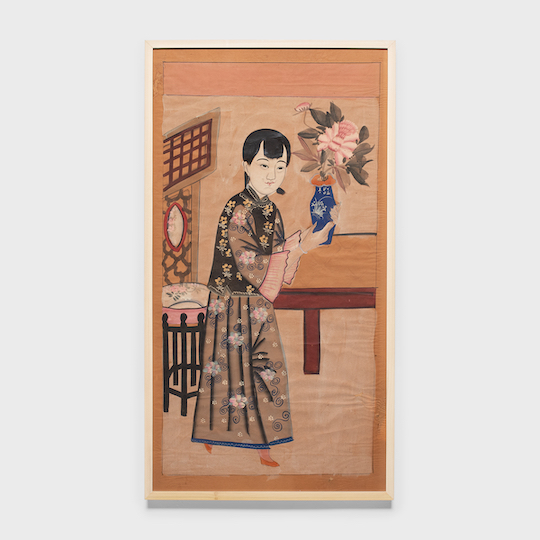
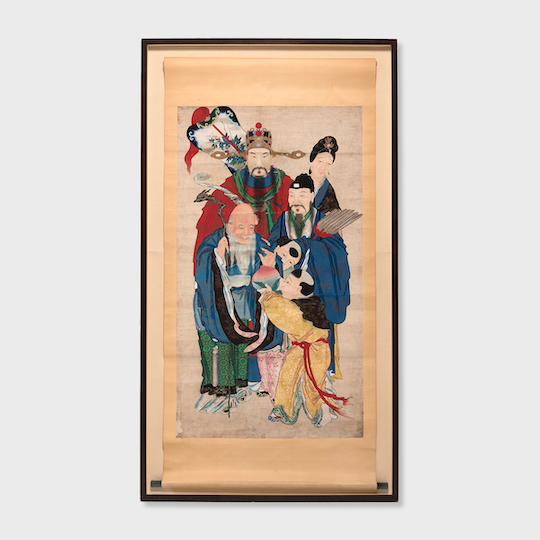
Shanghai Deco Lithograph Ad Posters
The Art Deco advertisments that emerged in 1930s Shanghai are an evolution of nian hua, re-imagined for the modern age of marketing. Commercial businesses often presented posters to their clients to commemorate the Chinese New Year. These posters have bold colors similar to their folk art predecessors, but women are removed entirely from the domestic sphere and become the focus of the male gaze. Rather than goddesses, mothers, or ancestors, these women stand alone in their power, tempting the viewer to buy cigarettes or fertilizer or the Shanghai lifestyle with an unabashed gaze. Often, the models in these ads wear a distinctive mix of western and eastern fashion, a style influence that lasted decades. Today, similar lithographs are prized by collectors and preserved in museum collections.
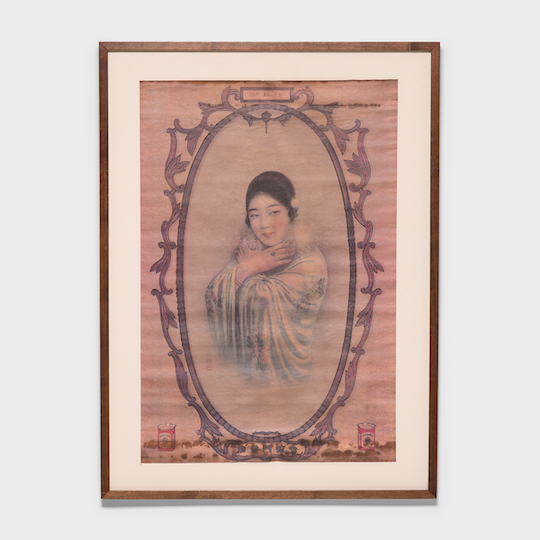
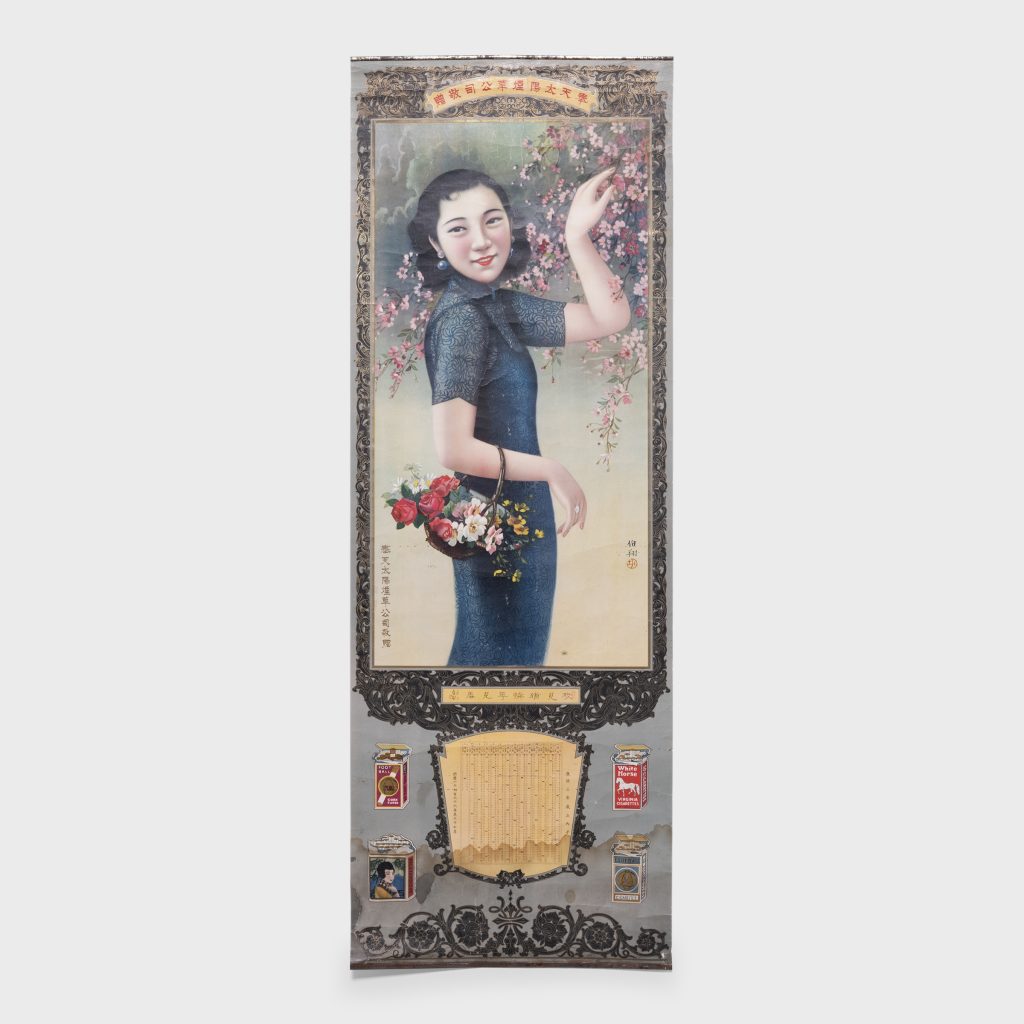
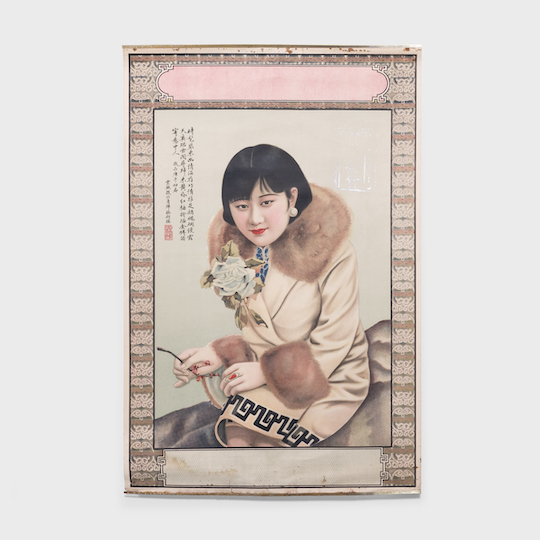
These examples of women in Chinese art span centuries, but each work shows women in varying state of power, whether as cherished mothers, unflinchingly modern women, or benevolent goddesses. For us, it’s this element that makes each work compelling, calling attention to other times, places and ways of life.
